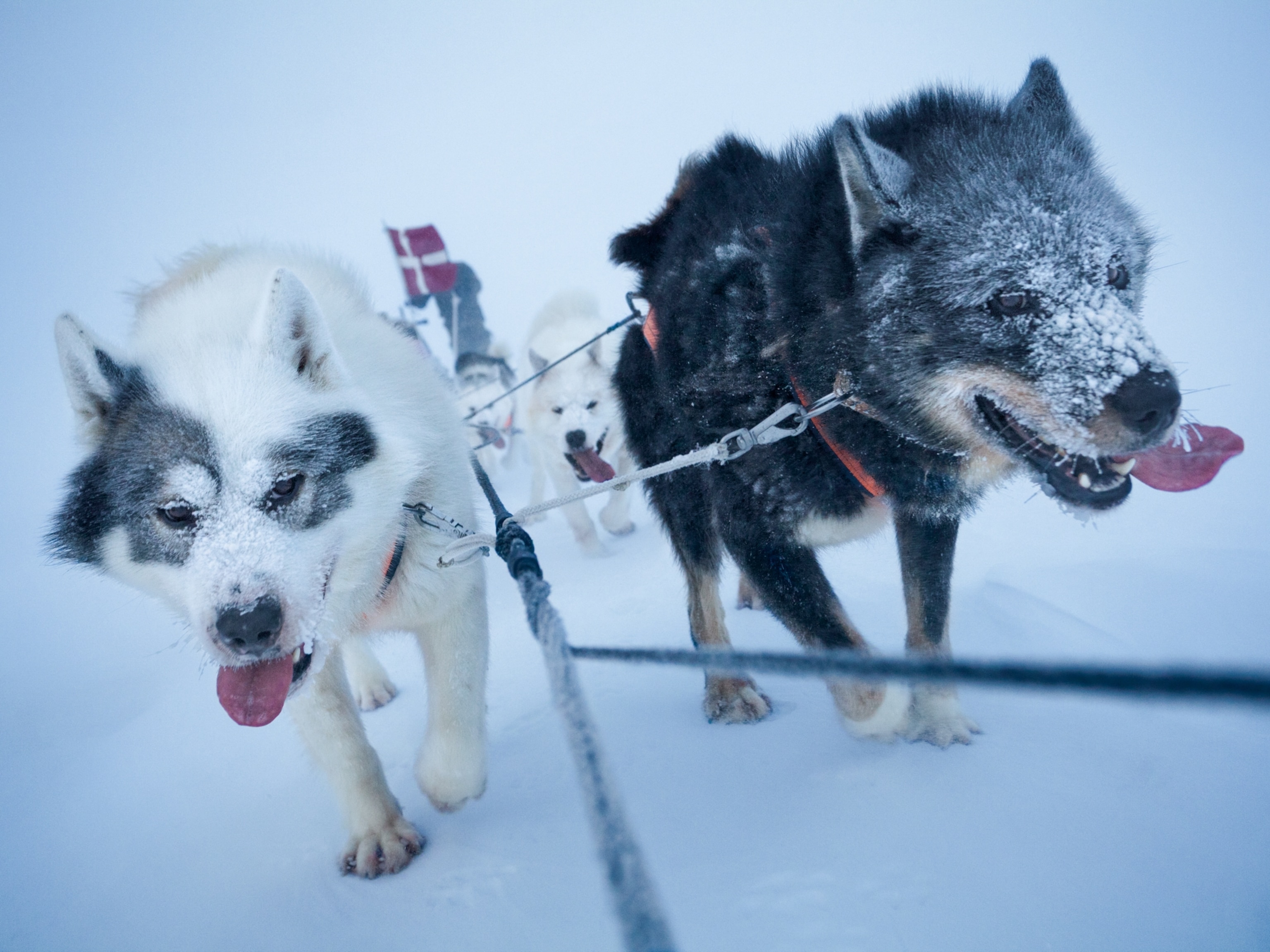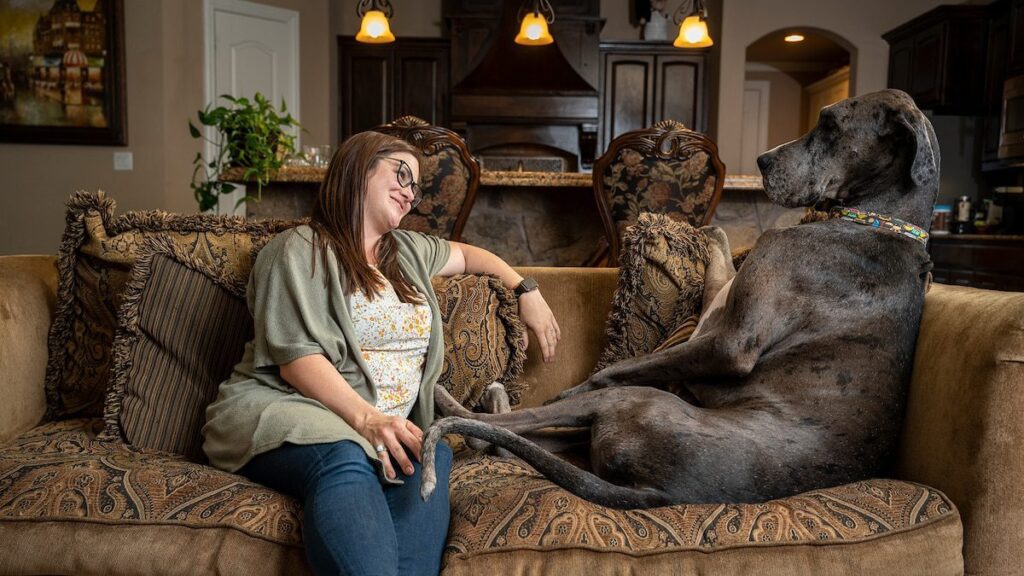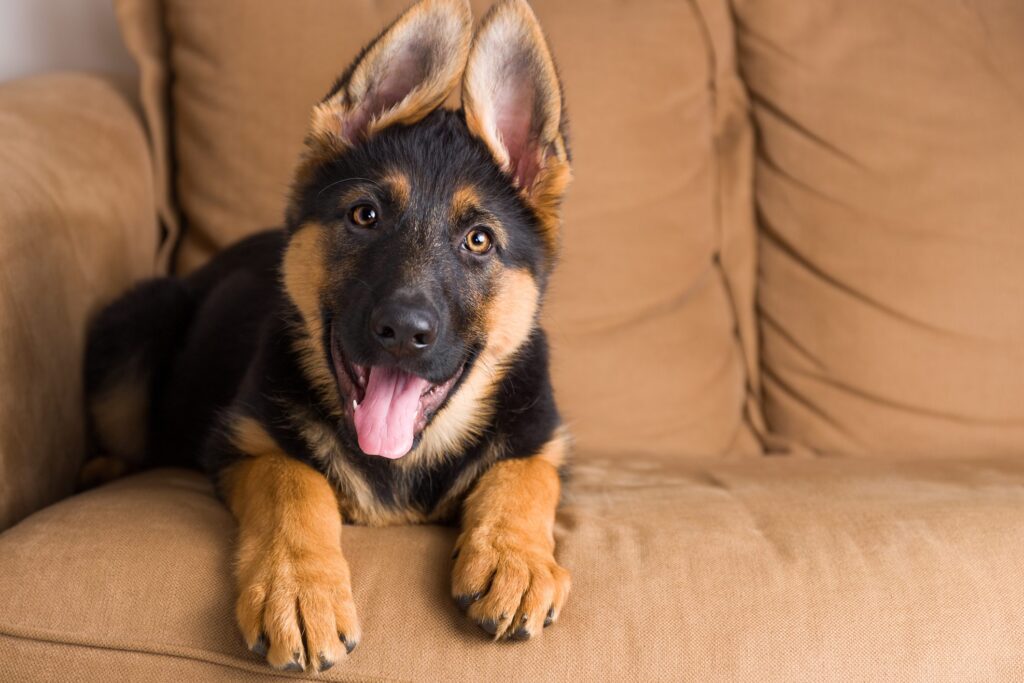With daylight saving time starting this month, dogs and their owners will likely lose an hour of sleep, as clocks are set forward. And if you’ve ever wondered if domesticated dogs have as much trouble adjusting to the time change as humans do, it turns out, scientists have looked into this question.
In 2021, researchers in Ontario, Canada, conducted a study of both sled dogs and companion dogs during fall daylight saving time, when we gain an hour and see an earlier sunrise. Both dogs and their human owners or caretakers wore sensors (on their collars and wrists, respectively), which measured movement and activity.
The scientists found while the pets had no trouble with the change, it took the sled dogs—working canines who were housed outdoors in kennels—a day to adjust. This was surprising. “I very much expected the sled dogs to be more attuned to sunrise time, because they’re housed outdoors, and daylight is known to be the strongest environmental modulator of sleep-wake patterns,” Ming Fei Li, study co-author and PhD candidate at the University of Toronto, says.
(Maybe dogs didn’t need us at all to domesticate themselves)
But the results underscore what really determines whether dogs are impacted by the time change. “The number-one factor that affected their wake-up time was human activity,” Li says. That is: dogs are less influenced by the changing numbers on the clock than they are by us.
“Dogs are very, very entrained to humans,” adds co-author Lavania Nagendran, also a PhD candidate at the University of Toronto. “It’s a testament to how well our patterns are synced.”


The manager of a conservation-friendly ranch in the Centennial Valley herds cattle on horseback with his dog.
Photograph by Ami Vitale, Nat Geo Image Collection


Working dogs were found to take more time to adjust to DST than pets.
Photograph by Jasper Doest, Nat Geo Image Collection
Dog’s DST behavior is a testament to their close bonds with humans
Some dog owners, of course, would beg to differ. Instagram and TikTok are full of viral videos of pets begging for dinner an hour earlier than usual after fall daylight saving time—or just refusing to get out of bed in the spring.
Rumi is a 4-year-old beagle in South Lake Tahoe, California, whose owner, Nicole Evatt, posted a video of him last March “annoyed” by the time change and wanting to sleep in. But she admits it was a bit of a joke. “Rumi would sleep 23 hours a day if I let him,” she says. “I don’t think he knows the difference.” But in the fall, when his meal is delayed due to daylight saving time, she does notice a meaningful change. “If he has to wait an extra hour for dinner, he acts like he’s dying of starvation,” Evatt jokes. So, in the days leading up to daylight saving time, she feeds him 15 minutes later each evening so that he has time to adjust.
It’s not absurd for owners to assume that some dogs would be impacted by the time change. After all, like humans, dogs do have a circadian rhythm, aka the body’s built-in 24-hour clock that helps determine when we eat and sleep. But it’s not that simple, says Alejandra Mondino, DVM, a neurology resident at the NC State College of Veterinary Medicine in Raleigh.
Mondino, who studies dogs and sleep, notes that light is an important factor, but social interactions and feeding times can also affect circadian rhythm in canines.
Dogs are “very, very influenced by their human companions,” she explains.
The results of the Ontario study—that companion dogs didn’t need to adjust to daylight saving time—didn’t surprise her, as it aligns with her own research. “We influence them more than the actual sunrise or sunset,” she says.




Left: A Siberian Laika sled dog lay asleep in the early morning covered by the nights snowfall. Right: A dogsled team on patrol in whiteout conditions in Greenland.
Photograph by James Hill, Redux (Top) (Left) and Photograph by Fritz Hoffmann, Nat Geo Image Collection (Bottom) (Right)
Carlo Siracusa, DVM, a veterinary behaviorist and associate professor at the University of Pennsylvania School of Veterinary Medicine, has treated canine patients whose anxiety flared after daylight saving time. “If you look at the reality from the dog’s point of view, it’s like, ‘Oh, all people went crazy now, and they’re doing things at a different time,’” he says.
You May Also Like
But he too thinks it has less to do with the dog’s circadian rhythm and more to do with human behavior.
“It’s really a change in the habits of people that is associated with the change of DST and the change of season,” Siracusa explains.
(Humans are hardwired to love cute animals. Learn more about why.)
For example, “if you get out of work at five, and you arrive home and you bring your dog out for a walk in the winter, it can be very quiet,” he says.
But after daylight saving time in the spring, there’s more sun later in the day—and likely more people and animals out to enjoy it.
“For a dog that really does not enjoy proximity to humans and people they don’t know, it might be difficult, and they might be more reactive, more nervous,” Siracusa says. “So, we have seen this type of change in some of our [canine] patients.”


The manager of a conservation-friendly ranch in the Centennial Valley plays with his dog.
Photograph by Ami Vitale, Nat Geo Image Collection
It is plausible some dogs are impacted, regardless of their owners
It is possible some dogs experience disruptions and grumpiness around daylight saving time. “The effect depends on the personality of the dog,” Siracusa adds. “And the same thing for humans, right? Some people really suffer, and some other people adjust very quickly.”
For instance, older dogs tend to lose their circadian rhythm as they age, which can lead to sleep disruptions, Mondino adds. This, in turn, could mean they have a harder time with even an hour of lost sleep as the clocks shift forward. It can affect any dog’s cognition, Mondino says: “They may need to recover that hour by taking more naps during the daytime.”
But seniors may be more affected.
“It’s harder to implement schedule changes with an older dog who kind of already is very used to particular routine, right?” Nagendran asks. “We did write a sentence in [the study] that, if you do have older dogs, just take even more care in implementing more gradual changes to their routine.” For all the dog owners lamenting their pup’s confusion, past or present, the study authors acknowledge that they’ve heard all the anecdotes too.
“But the numbers and the results that we found did not support the anecdotal evidence that we heard, and that’s just science,” Li says of the study in Ontario. “With that being said, I think it’s really important to note that this was done during the fall shift and not the spring shift. And in humans, at least, we see that the spring shift tends to have a greater biological and physiological effect.”




